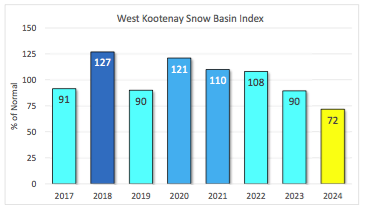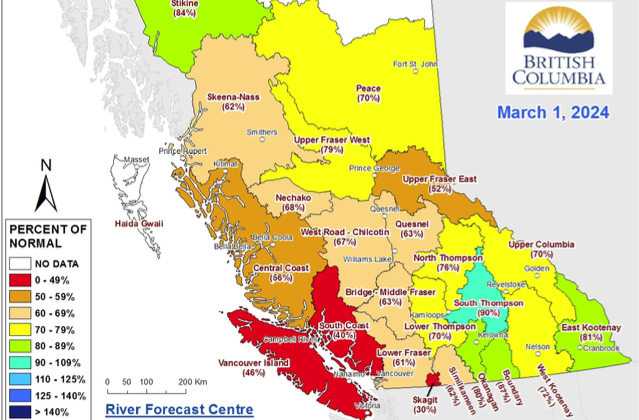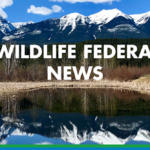Snowpack improves somewhat, but remains well below average.
The West Kootenay’s snowpack is still well below record-low levels but it is inching upward, according to the latest B.C. River Forecast Centre’s snow survey.
As of March 1 the West Kootenay snowpack is 28 per cent below normal throughout the region — having risen five per cent over the last month (67 per cent) — and is well ahead of the current provincial average of 66 per cent.
The March 1 date is particularly important, considering it is the typically the “penultimate indicator” of the snow accumulation season, with only a month or two of accumulation remaining.
History shows approximately 80 per cent of the annual B.C. snowpack accumulates by March 1 and peak snowpack occurs mid-April.
“Despite the currently low snowpacks in most regions, changes can still occur in the overall snowpack and seasonal outlook,” noted the report from the B.C. Rivers Forecast Centre. “However, with strong indicators in the current El Niño and seasonal forecasts for above-normal temperatures over this period, the on-going low snowpack trend is expected to persist throughout the remainder of this season.”

As the rain continues across the West Kootenay the snowpack may experience some recovery and move nearer to normal by the peak of the snow accumulation season in April to May.
“A recovery to normal provincial snowpack would require double the typical rate of snow accumulation for the remainder of the season,” the report stated.
Snowpack serves as a natural reservoir, gradually releasing water during the spring snowmelt, recharging rivers, streams, wetlands, lakes and groundwater.
A reduced snowpack level poses a threat to the availability of freshwater critical for agriculture, community water systems and ecosystem health.

Wet now, drought later
In response to the low snowpack, last month the B.C. Watershed Security Coalition called for the Province to create a watershed management system across B.C. and invest $75 million annually into the province’s Watershed Security Fund to safeguard freshwater in face of the looming drought.
“A historical investment like this would provide the necessary long-term support for climate adaptation projects already taking place across the province, and accelerate Provincial drought response,” said Living Lakes Canada executive director Kat Hartwig.
With current and future snowpack prospects this year still lean, the likelihood of another record drought this summer is significant.
“Unless conditions shift in the next few months, communities should be prepared for low stream flows this summer,” said Paige Thurston, Columbia Basin Water Monitoring Framework program manager with Living Lakes Canada. “It will be critical that we track water and climate conditions throughout the year and respond accordingly.”

























Comments